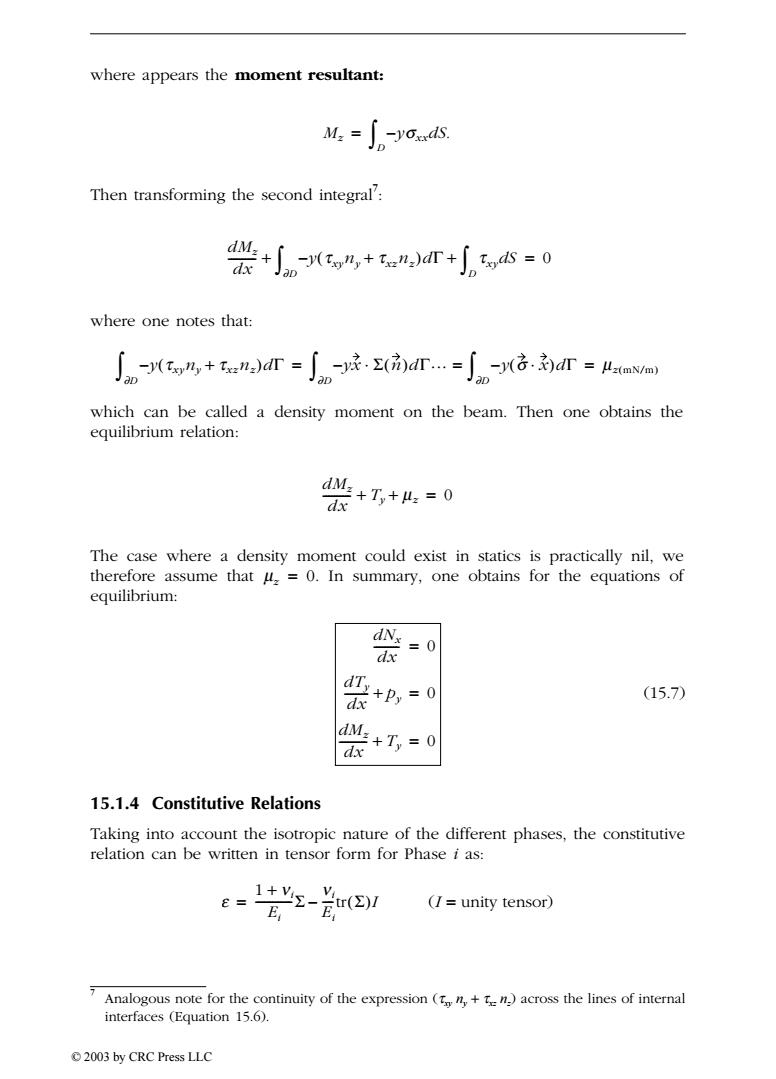正在加载图片...

where appears the moment resultant: M.=∫p-yos Then transforming the second integral': 0+∫n%+dr+ns=0 where one notes that: ∫n-pcg%,+.,)r=jn-定.2(动ar=jnar=hmNm which can be called a density moment on the beam.Then one obtains the equilibrium relation: M+T,+4:=0 dx The case where a density moment could exist in statics is practically nil,we therefore assume that u=0.In summary,one obtains for the equations of equilibrium: s= dx +p,=0 (15.7) dx dM: dx +T,=0 15.1.4 Constitutive Relations Taking into account the isotropic nature of the different phases,the constitutive relation can be written in tensor form for Phase i as: tr( E= (I=unity tensor) E Analogous note for the continuity of the expression (across the lines of internal interfaces (Equation 15.6). 2003 by CRC Press LLCwhere appears the moment resultant: Then transforming the second integral7 : where one notes that: which can be called a density moment on the beam. Then one obtains the equilibrium relation: The case where a density moment could exist in statics is practically nil, we therefore assume that mz = 0. In summary, one obtains for the equations of equilibrium: (15.7) 15.1.4 Constitutive Relations Taking into account the isotropic nature of the different phases, the constitutive relation can be written in tensor form for Phase i as: 7 Analogous note for the continuity of the expression (txy ny + txz nz) across the lines of internal interfaces (Equation 15.6). Mz –ysxxdS. DÚ = dMz dx ---------- y txyny + txznz – ( )dG txydS DÚ + ∂D Ú + = 0 y txyny + txznz – ( )dG ∂D Ú –yx S( ) n dGº –y( ) s ◊ x dG ∂D Ú ◊ = ∂D Ú = = mz( ) mN/m dMz dx ---------- + + Ty mz = 0 dNx dx --------- = 0 dTy dx -------- + py = 0 dMz dx ---------- + Ty = 0 e 1 + ni Ei -------------S ni Ei = – ----tr( ) S I (I = unity tensor) TX846_Frame_C15 Page 290 Monday, November 18, 2002 12:30 PM © 2003 by CRC Press LLC